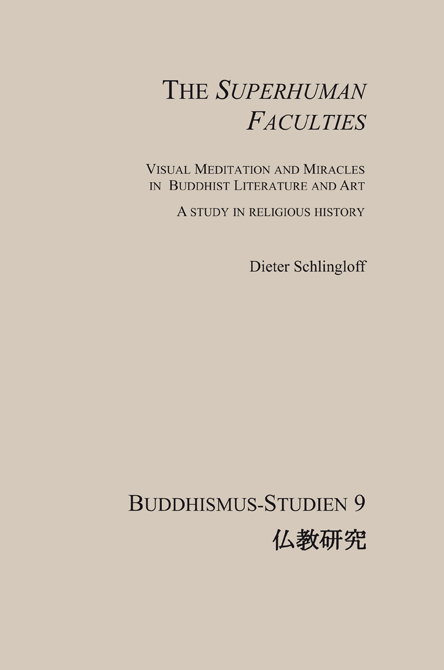|
 Schlingloff, Dieter Schlingloff, Dieter
The Superhuman Faculties
Visual Meditation and Miracles in Buddhist Literature and Art. A Study in
Religious History
(Buddhismus-Studien / Buddhist Studies 9)
Eine Veröffentlichung des EKO-Hauses der Japanischen Kultur e.
V., Düsseldorf
2018 · ISBN 978-3-86205-333-9 · xxiv /
145 S., kt · EUR 28,—
This publication deals with a phenomenon that has been expressed in
various aspects in both literature and art: people exist who have, or are
able to gain, the ability to see in trance irreal figures appear and act.
Depending on the visionary’s spiritual or religious environment, these
appearances take on meanings in accordance with the visionary’s expectation
and then, dogmatically interpreted, are entered by the visionary himself or
by others into religious literature as stories of actual events – sometimes
being so transformed in the process that their visionary origin is no longer
apparent.
Our study examines this phenomenon in the so-called Hīnayāna
Buddhism in India and its transmission to Central Asia, where this process
can often be observed. The faculty of visions is naturally not limited to
Buddhism; it can be equally observed in the three major monotheistic
religions as well. One prominent example from the Bible is the
transfiguration of Jesus, – perhaps the vision with the greatest
consequences in the New Testament.
CONTENTS
Prologue
Notes on the Prologue
1.The Vision of the
Heavens in a State of Trance
2.Symbols and Objects of Meditation
3.The
Buddha’s First Trance
4.The Faculty of Levitation
5.The Multiplication
of the Body
6.The Creation of Buddha-Figures
7.The Emanation of
Figures
Notes
Literature quoted
|
